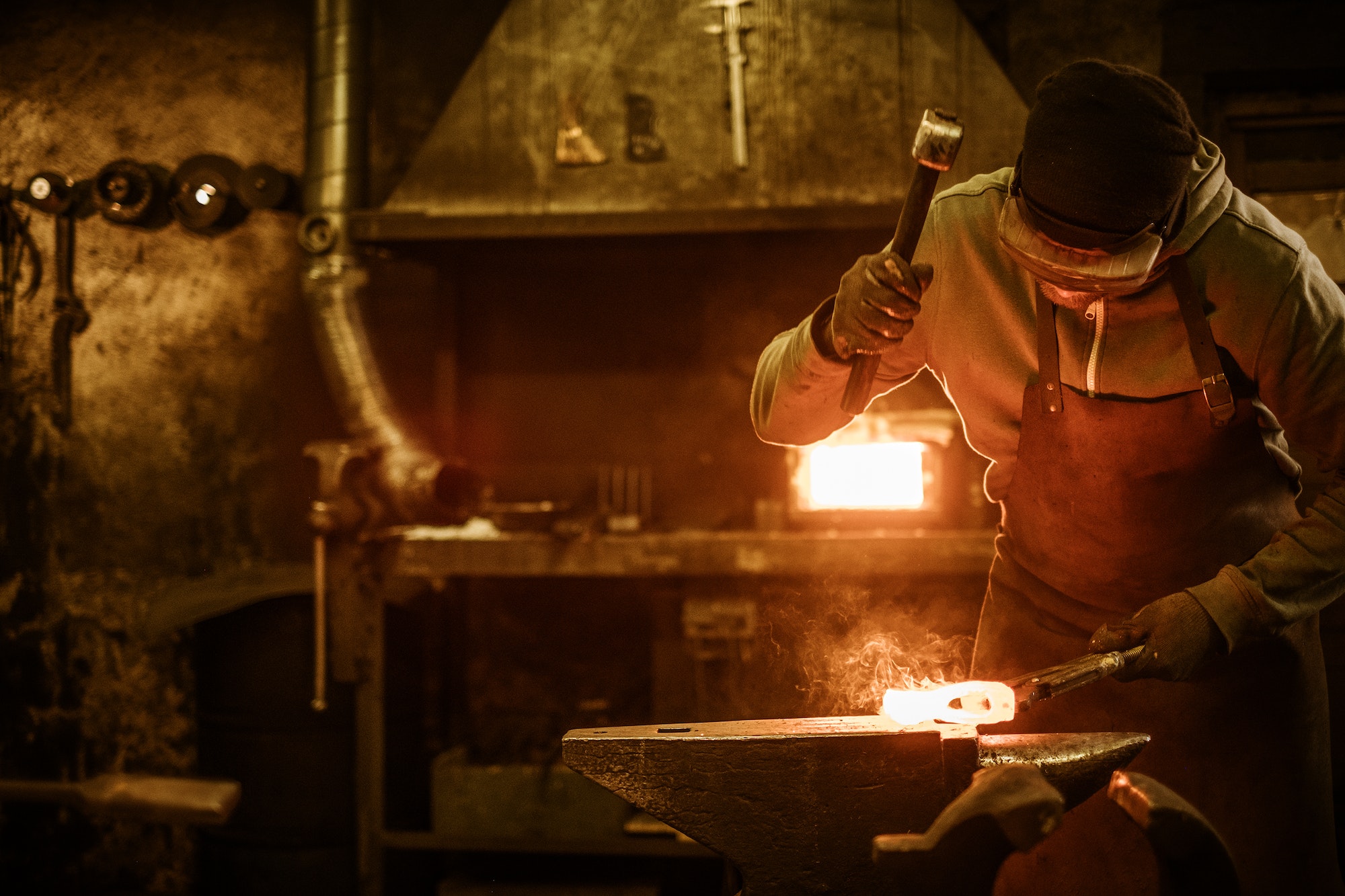Forging a knife is one of the most satisfying and iconic projects in blacksmithing. It combines skill, science, and creativity—resulting in a tool that’s both functional and personal. But what does it really take to forge your first knife?
Step 1: Choosing the Right Steel
The heart of a good knife is good steel. High-carbon steels like 1095 or 5160 are popular for beginners. They’re durable, hardenable, and widely available. Avoid mystery steel unless you know its composition, as inconsistent results can be frustrating and unsafe.
Step 2: Forging the Blade
This is where the magic begins. Heat the steel in your forge until it’s orange-hot, then shape it with your hammer. Start with the profile: draw out the blade’s shape, then move on to beveling—the taper from the spine to the edge.
Hammering teaches you the importance of precision and rhythm. It also gives your knife its character; no two hand-forged blades are exactly the same.
Step 3: Heat Treatment
Proper heat treatment is what transforms soft steel into a hard, functional blade. After forging and refining the shape, normalize the blade (heat and air-cool it a few times) to relieve stress. Then, harden it by heating and quenching in oil. Finally, temper it in the oven to reduce brittleness.
Step 4: Finishing
Grind and polish the blade, shape the handle, and mount it. Whether you use wood, micarta, or antler, the handle is your final personal touch.
Knife forging is a challenging, rewarding process that builds skill and confidence. Each blade you create tells a story—of fire, focus, and craftsmanship.

